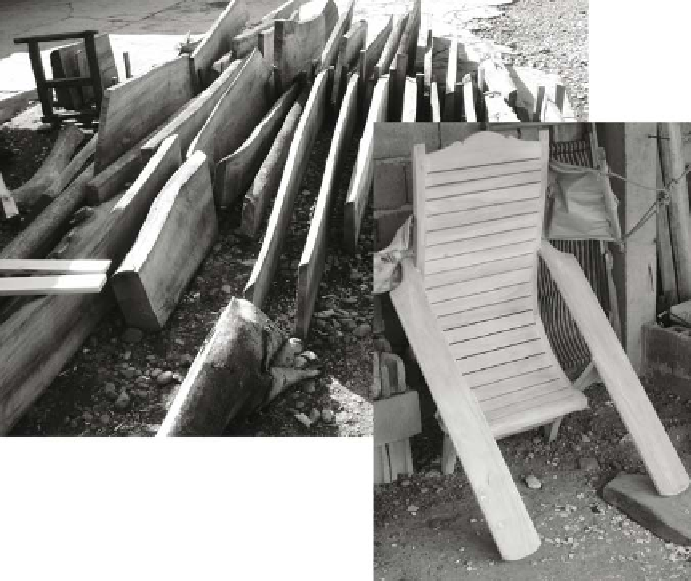Agriculture Reference
In-Depth Information
Photo 8.1
Gmelina arborea planks drying and finished product on a smallholder's compound in
the Philippines (©DJ Snelder)
the premium commercial timbers (veneer and large size, quality wooden planks).
This is already happening in central Philippines, where mahogany trees planted by
small-scale farmers are sold to the wood industries of Cebu, the second largest city
of the Philippines (Yao et al. 2005). Unfortunately, mahogany stocks growing on
farms in northern Mindanao are not sufficiently large yet so as to supply the wood
industries in this region with sufficient quantities of timber.
In the early 1990s, the stumpage price of farm-grown gmelina timber was high,
varying between PhP 7.0 to 9.0 bd.ft.
−1
. But since 1997, the average price is only
PhP 4.0 bd.ft.
−1
. Tree planters have a good understanding of the reasons for the cur-
rent decline in the price of farm-grown timber. Farmers reported that the market is
likely to be saturated as plantation stocks rapidly increased when prices were high.
In addition, lower demand for low quality timber is also a contributing factor.
Although some farmers indicated market control by exploitative middlemen as the
reason for the current low timber price, there is no evidence of the presence of a
timber cartel since good market access and the existence of many buyers make the
trade of farm-grown timber fairly competitive. According to the owners of SSS
interviewed, the price has declined because of the existence of large stocks of
undersized and low quality timber. SSS require logs with a minimum length of

Search WWH ::

Custom Search